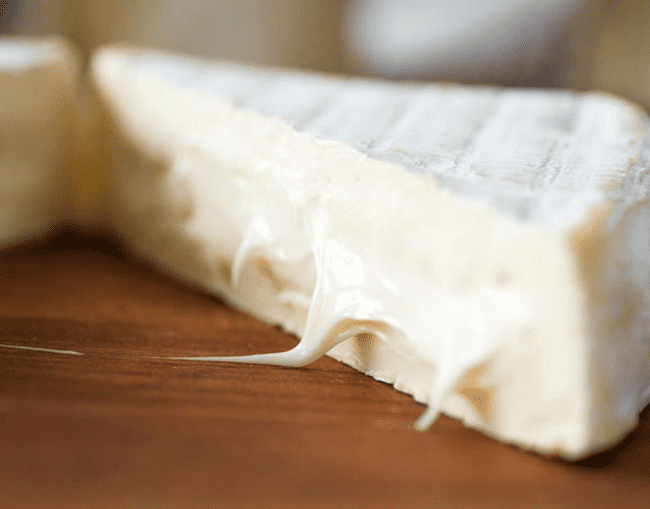Cheese is the ultimate comfort food for many, and there’s nothing better than some creamy brie or aged crumbly feta! Besides the apparent varieties, one of the most well-known is the Italian robiola.
If you haven’t had your hands on this cheese, you may wonder what robiola cheese tastes like.
It’s a soft and mild-tasting variety of cheese made from a combination of cow, sheep, and goat milk. With its divinely creamy texture and sweet flavor, it’s quite a favorite across the world!
Read on to learn more about robiola cheese, its taste, and some substitutes.
What Does Robiola Cheese Taste Like?
Robiola is available as a luscious slab of creamy cheese made from the goodness of pasteurized cow, goat, and sheep milk. The resulting flavor is slightly tangy, buttery, and somewhat nutty-earthy. Some may even describe the taste as mushroom-like with salty-sweet flavors!
This hard-to-resist cheese is quite a flavorful pate with a soft and fluffy texture.
Rich and creamy, robiola tastes delicious on its own and when added to savory dishes like pizza, pasta, and salad. But did you know it’s also one of the most popular choices for making cheese-based desserts like tiramisu or cheesecake?
The tender cheese runs oh-so-softly from its bloomy white rind with flavor notes that are mildly sour, tangy, and milky. Robiola’s velvety texture goes perfectly well with crusty bread and fruity wine! Usually, robiola won’t have a rind; instead, you’ll find it as a creamy paste that’s easily spreadable.
Generally, it has a delicate and tart flavor; however, the taste may vary according to the combination of milk used and the curing process. Therefore, you may find some varieties of robiola have a sharper flavor profile.
Fresh robiola has a mouthwatering aroma and tastes sweet and mildly acidic. But, the cheese may form a crust when it’s aged for three weeks. Typically, the color ranges from milky-white to yellowish, while the flavor and aroma may vary from slightly tangy to sharply acidic.
Unlike other types of cheese, robiola ages for a short time, usually up to three weeks. Once it ages, it develops a fuller taste and odor, with herby notes. You may even notice a slightly spicy flavor in aged robiola cheese.
The slab may form a light reddish rind during the maturing process, while the body may turn slightly more compact. Over time, it turns runnier and creamier like brie, all thanks to the proteins in the cheese.
What Cheese Is Similar To Robiola?
There are a few varieties of cheese you can try in place of robiola as a substitute in your recipe. Here are a few options:
- Cream Cheese: Cream cheese comes close to robiola in terms of texture and flavor. Therefore, you can use cream cheese in recipes that call for robiola cheese to enhance the taste, flavor, and texture.Since cream cheese is mild-flavored with sweet and tangy notes, it pairs well with sweet and savory foods, much like robiola! Most importantly, both have silky and spreadable consistencies and are also similar in appearance!
- Brie: Brie is another well-known substitute, especially due to its runny and creamy consistency. In addition, it has an intense earthy aroma that we’ve also noticed with robiola. While it’s a mild cheese, it also has a rich, buttery taste with subtle hints of fruity notes.
- Sour cream: With its thick and velvety texture, sour cream can easily replace robiola, especially if you’re looking for a similar spreadable texture.
Is Robiola Cheese Stinky?
Yeah, robiola cheeses are stinky. Perfectly ripe robiola is known to have a strange and relatively pungent smell that’s reminiscent of cultured cream. It also has hints of nutty and earthy flavor notes, slightly like mushrooms. But surprisingly, the taste is nothing like the aroma. Instead, you’ll notice a delightfully tart and salty flavor followed by a mildly sweet aftertaste.
Interestingly, this specific variety of cheese has multiple flavor profiles, depending on how long you cure it. You’ll find fresh robiola, la tur, brunet, robiola brusina, and more! Although the deliciousness is constant, you may notice that the smell coming from the cheese varies between the types.
Nevertheless, if you notice a pungent ammonia odor, you must discard the cheese as it indicates a decline.
Conclusion
Now that you’ve learned all about robiola, its flavor profile, and its texture, you must try it in different recipes to enjoy the delicious and creamy flavor. You’ll love creating savory meals and sweet desserts with this versatile and decadent pate.
The silky texture is what keeps you going for more!
Robiola cheese isn’t available everywhere because of its uniquely intense flavor. If you’re unable to find this specific cheese, you can try out cream cheese, as it’s the closest substitute to robiola. They share several similar characteristics, including the creamy texture and delectable flavor. You can also try brie or sour cream to get identical creamy goodness in your recipe!

